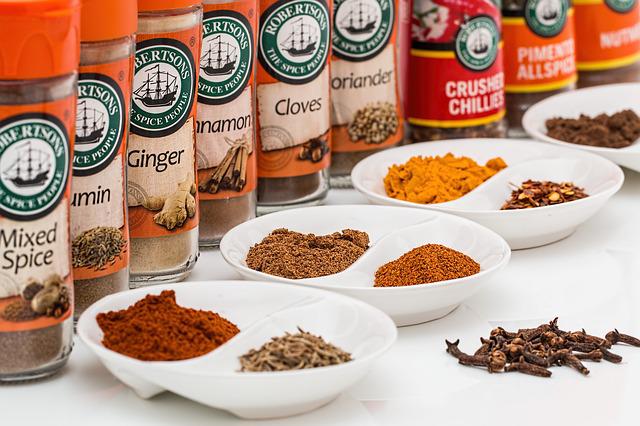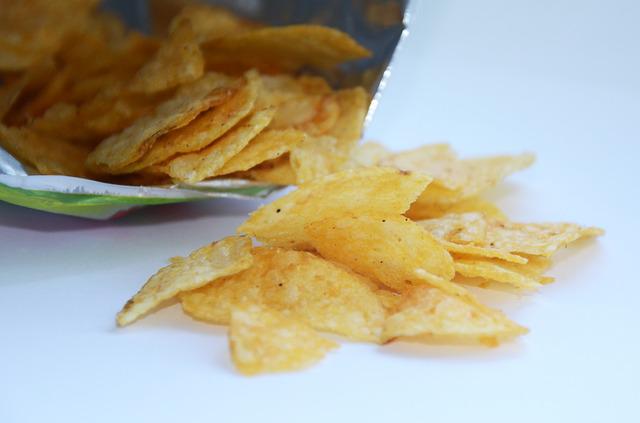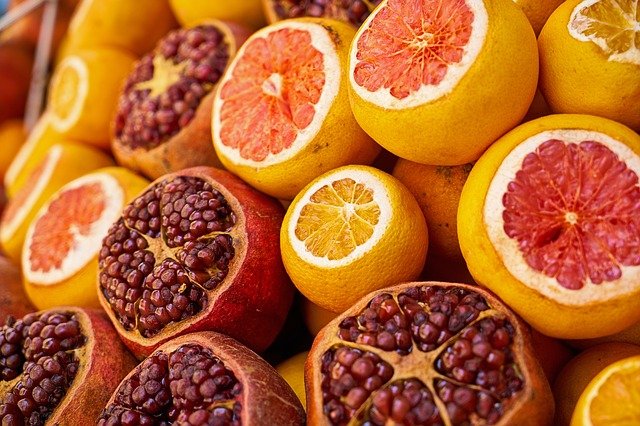Food preservatives act as a means, providing a long shelf life for food. These substances used as a preservative are also used to improve the taste and appearance of foods.
Without wasting much of our time, let's talk in details about the types of food preservatives and their usage.
Table of contents
- enzymes
- α-Amylases
- Glucoamylases
- amino acids
- shelf life additives
- sodium benzoate
- sodium chloride(Salt)
- titanium dioxide
- colours
- Natural colours
- Artificial colours
- flavours and flavour enhancers
- Nitrogen Gas
- Nitrate and Nitrites
- Sulfites
- ASCORBIC ACID
- Butylated Hydroxyanisole (BHA)
- Butylated hydroxytoluene (BHT)
- Calcium Disodium Ethylenediaminetetraacetate
- Polyphosphates
Types of food preservative and the food they are used on
There are many types of food preservatives including:
1. enzymes
Using enzymes or microorganisms in food preparations is an age-old method.
Enzymes are widely used in several food preparations to improve the taste and texture and also offer huge economic benefits to industries.
Microbial enzymes are the suitable source to plants or animals due to several advantages such as easy, cost-effective and consistent production.
Application of enzymes to foods
2. α-Amylases
These enzymes are widely distributed in all living organisms. Most of α-amylases are metalloenzymes and require calcium ions for their activity, stability and integrity.
They are used in baking industry as flavour enhancement and antistaling agent to improve bread quality.
During baking, they are added to the dough to convert starch to smaller dextrins, which are subsequently fermented by yeast.
It improves the taste, crust colour and toasting qualities of bread.
This enzyme is also application in clarification of fruit juices, which is carried out in the presence of cellulase and pectinase to improve yield and to make the process cost-effective.3. Glucoamylases
These enzymes are also called saccharifying enzymes and are widely distributed in all living organisms. These enzymes are mainly produced by Aspergillus niger and Aspergillus awamori, but the one produced by Rhizopus oryzae is majorly used for industrial applications.
Glucoamylases are widely used in food industry, such as for the production of high-glucose syrups and high-fructose syrups.
They also used in baking industry to improve flour quality, reduce dough staling, as well as to enhance bread crust colour and the quality of high fibre baked productsThey convert the starch present in the flour to maltose and fermentable sugars. Fermentation by yeast leads to dough rise.
These enzymes play an important role in the production of sake and soya sauce, and in the production of light beer. They metabolize dextrins and convert them to fermentable sugars with reduced calorific value and alcohol content in the beer.
4. amino acids
Amino acids are also widely used as preservatives in foods and drinks.
Fruit juices are often preserved using cysteine as an antioxidant.
Tryptophan is also used with histidine as an antioxidant in preserving milk powder.
Phenylalanine is used with aspartic acid to produce the dipeptide aspartame. Aspartame is roughly 200 times as sweet as sucrose and often used as a low-calorie alternative to artificial sweetener in soft drinks.
Some products are often supplemented with certain amount of amino acids to increase their nutritional value.
Many plant based products are insufficient in certain amino acids which can be introduce d to provide the consumer with extra nutrients to improve health. For instance, bread can be enriched with lysine, and soy products can be enriched with methionine.
Lysine, methionine, and glutamic acids are mostly used in animal feeds.
5. shelf life additives
Shelf life additives are food additives that improve the shelf life(life span before spoilage) of our foods.
Food additives are organic substances that are added intentionally to food in small quantities during processing and production to improve or maintain the quality of processed foods such as vegetables (cauliflower, carrot, potato, lemon).
The most common food additives and preservatives used are:
6. sodium benzoate
which is used as a preservative in jams and jellies and other processed foods.
Sodium benzoate is also used as a preservative in many other foods, such as soaps, toothpaste, cosmetics and medicine.
7. sodium chloride(Salt)
which helps to prevent spoilage and keep foods like ready-to-eat meats and cheeses safe to eat.
Sodium chloride is also used in fermenting processes for foods like sauerkraut, pickles and kefir.
8. titanium dioxide
which improve the white color or opacity of foods and over-the-counter products. This is added to some food packaging to preserve the shelf life of a product.
Packaging containing this additive has been shown to delay the ripening process of fruits and prolonging shelf life due to decrease in ethylene production.
The most common foods that contain titanium dioxide are chewing gum, candies, pastries, chocolates, coffee creamers, and cake decorations.
9. colours
Colours protect vitamins and flavours that may be affected by sunlight during storage.
By adding colours, the natural colour of a dish can be enhanced and decorative colours is introduced to other foods.
Food color can influence the perceived flavour.
There are two types of food coloring: artificial and natural.
10. Natural colours
Natural food colours are any dye, or other substance obtained from vegetable, animal, mineral that is capable of colouring foods or drugs.Colours are from various sources like seeds, fruits, vegetables, algae and insect.
Some of the natural sources from which colours are extracted are Grass, beet root, and turmeric.
- Red, blue and violet: Gotten from anthocyanins found in beetroots, raspberries and red cabbages.
- Green: Gotten from chlorophylls, the green pigment found in all leaves and stems.
- Yellow, Orange, Red: Extracted from carotenoids found in apricots, carrots and tomatoes.
READ MORE: Appraisal of traditional food preservation in Nigeria
11. Artificial colours
They are also called synthetic colours. They are manufactured by chemical reaction and are widely used in food and pharmaceutical industries.Some commonly used food colours are tartrazine, sunset yellow, amaranth, allura red, quinoline yellow, brilliant blue and indigo carmine.
Some packaged foods like yogurt or cereal may contain color additives, which make food products more eye catching or have consistent coloring.
For example, Soymilk may have a very small amount of color to make it appear whiter and more like dairy milk.
12. Flavours and flavour enhancers
By WHO, flavour enhancers are added to food to improve aroma or taste.
They make up the greatest amount of additives used in foods. There are hundreds of various flavourings used in a wide variety of foods, from confectionery and soft drinks to cereal, cake, and yoghurt.
Natural flavouring enhancer include nut, fruit and spice blends, and those derived from vegetables and wine.
In addition, there are some flavours that imitate natural flavours.
13. Nitrogen Gas
We are familiar with a bag of chips filled with nitrogen gas. Nitrogen is an inert gas accounting for 79% of the atmosphere, it is one of the most widely used preservatives in the food industry.
This distilled nitrogen is used by food industries in their packaging processes to prolong the shelf life and quality of their products. This is known as nitrogen flushing in technical terms.
Nitrogen flushing is the method in which oxygen-rich air is flushed out of the bags and nitrogen gas is quickly filled as a preservative. Unlike oxygen, nitrogen does not react and spoils food.
Moreover, It is also used in providing cushioning to the chips and prevents them from undergoing any wear and tear during their transit.
14. Nitrate and Nitrites
They are widely used in the food industry as preservatives.
However, they are added to some processed food items like bacon to preserve and extend their shelf life.
Nitrites develop the flavor and color of cured meats. It also prevents rancidity, off-odors, and off-flavors from developing during storage.
The pink color of preserved meats is also due to nitrite. The most widely used nitrites and nitrates are sodium and potassium nitrite and sodium and potassium nitrate.
It can be easily found on the ingredient label of several food items such as bacon, ham, sausages, and hot dogs.
15. Sulfites
Prominently used in winemaking to prevent malolactic fermentation.
Soft drinks, juices, jams, jellies, sausages, and dried or pickled fruits and vegetables are a few food items which contain sulfites to prevent spoiling and discoloration.
16. ASCORBIC ACID
Ascorbic acid is one kind of vitamin C. Plants, especially citrus fruits, tomatoes, and green vegetables, contain ascorbic acid.
Some fruits and vegetables contain ascorbic acid, which is also gotten from the kidneys of some animals.
17. Butylated Hydroxyanisole (BHA)
When it comes to the preservation of food items containing fats, one of the most known choices of preservatives is Butylated Hydroxyanisole (BHA).
Since 1947, it has been included to foods to preserve fats and oils and keep them from becoming rancid.
Moreover, it is also used to preserve and prolong the shelf life of foods or food items that are cooked in fats because it has high thermal stability and antioxidant activity in baked food items.
Common food items that use BHA as a preservative include butter, lard, biscuits, beer, sweets, vegetable oils, snacks, glazed fruits, nuts, chewing, and meat products.
18. Butylated hydroxytoluene (BHT)
This is also a similar food preservative to Butylated Hydroxyanisole (BHA) that is mostly used to preserve food items that contain fats. It is used to preserve the odor, color, and flavor of food.
BHT is found in a various packaging materials. It is also used to make shortening, cereals, and other fat-and-oil-based goods.
19. Calcium Disodium Ethylenediaminetetraacetate
Primarily used for food flavouring purposes and food preservation in canned food items.
Calcium disodium EDTA enhance flavour retention and reduces discoloration and turbidity in soft drinks. For instance, in beverages containing vitamin C.
Moreover, it also serves as a preservative in the cosmetics and pharmaceutical industries.
20. Polyphosphates
They’re used to increase binding characteristics, limit moisture loss during heating and thawing, and keep items from drying out. For instance, when meat sandwich fillings are cooked at high temperature or when frozen chicken is reheated and loses lots of fluid.
Polyphosphates also enhance the appearance of meat products in the freezer cabinet by reducing rancidity.
It also help to promote shelf life by reducing chemical and microbiological degradation.
We have been able to provide the 20 types of food preservative and the food they are used on we believe this article has helped you alot. Let's drop our reviews and any suggestion in the comment section. Thanks.



















